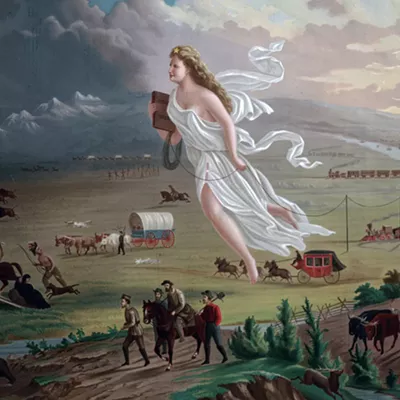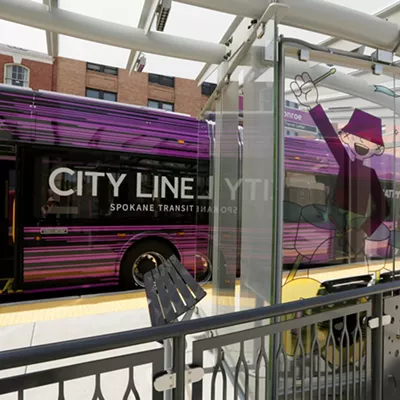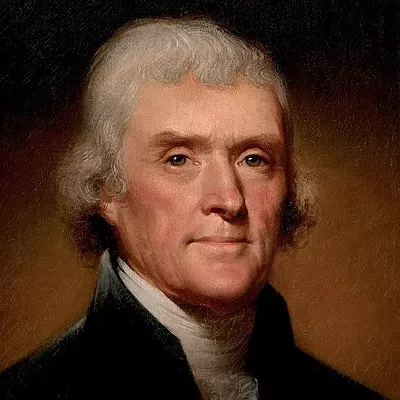And then there's the matter of reducing congestion. Cars create congestion -- that's a no-brainer. And experience shows that you don't reduce congestion by building ever-wider highways. Indeed, you do just the opposite; you invite more traffic. It's the old light-moth problem. I lived in Northern Virginia when the Theodore Roosevelt Bridge opened. It crosses the Potomac halfway between the Key Bridge upstream and the Memorial Bridge downstream. The Roosevelt Bridge was at planned capacity shortly after it opened. And where were all those cars before it opened? No one knew then, and I doubt they know today.
The kind of light rail system being planned for Spokane reduces congestion. There are, of course, arguments over just how much a light rail system can reduce congestion. Some studies conclude that presently, in many light rail cities, people get to work just as fast by taking the car. The counter argument is that automobile congestion, given certain loads and road widths, is largely inelastic; that is, no matter what you do, you can't affect it much one way or the other. Seattle has those express lanes, but by only requiring two people in a car to qualify to use the lane, they aren't taking that many cars off the highway.
In contrast, light rail is far more elastic. The more trains you run, the more you reduce congestion. In London, for example, they run enough trains so that passengers wait no more than three to five minutes, and everyone uses the tube. Likewise in Boston and in New York.
Which brings me to perhaps the most important point: Critical to the success of light rail is convenience. In cities where you have trains running on time and frequently, over multiple routes, you get high usage. If the trains run every three minutes, almost everyone will use them. If they run every 15 minutes, expect to see a drop off. If they run every 30 minutes, such as many buses do, then the middle class, which can afford the cost and time to drive, stays away except when they want to use the system as an amenity. To get a fair reading of light rail effectiveness, you have to have the system well into place.
There is yet another reason to support light rail. If the route is chosen carefully and the "stations" are strategically located, light rail can work to reduce urban sprawl. I define sprawl as growth in a decidedly non-urban design: low density, commercial strip development, a continuation of the automobile culture. Spokane needs to be moving in just the opposite direction. But not everyone is convinced.
In a recent letter to the Spokesman-Review, one critic wrote:
"Light rail is one of the most impractical, costly, taxpayer-dependent systems ever conceived, especially in our climate. Not one system built so far pays for itself. Why? Because they don't make economic sense! But sensible thinking never stopped a tax-supported boondoggle from happening."
I can't speak for his research, but I can point out that the identical criticism can be directed towards almost every public infrastructure project ever built. In his recent book, Mega-Projects: The Changing Politics of Urban Public Investment (co-written with David Luberoff), Alan Altshuler points out that you can't find a public works project anywhere that "pays for itself." Not mass transit, not arenas, not convention centers, not highways, not baseball parks, not football stadiums not even airports (which could, he says, make money if they weren't so regulated).
As we just completed our own very expensive convention center, let's review. Business advocates, bolstered by standard-issue consultant studies, routinely make the following claims, Altshuler says: New convention center development is essential to keep up with improvements in other cities; the project will spark large amounts of collateral development; and it will more than pay its own way when economic multiplier effects are taken in to account.
Yes, says Altshuler, some cities do make it pay: In 1996, 55 percent of the largest 200 trade shows took place in five cities. (Can you guess? Las Vegas, Chicago, Atlanta, New York and Dallas.) Most of our cities played for the leftover crumbs. The convention business didn't even make that much difference to the hotels, Altshuler claims. Convention centers are much more economically fragile than, say, ballparks, if for no other reason than they don't have a permanent tenant. By the mid '90s, most convention centers weren't making enough to pay interest on the bonds.
The justification for most of these mega-projects, then, must be the collateral benefits, which feeds into something we can call the "community growth calculus." Which brings us back to Spokane's light rail initiative. Might we not face one of those, "if not now when" questions? That's probably the case, and we'll likely be seeing a proposal for voters to consider sometime soon.
I would warn, however, that if all we end up with is a bus line by another name, then we do little to conserve energy -- and we won't reduce congestion all that much and we'll fail to support the spin-off non-sprawling development. Which raises the challenge for the promoters of the plan: Has the horse already left the barn? Can light rail really change the sea of sprawl we see between Spokane and Coeur d'Alene?















